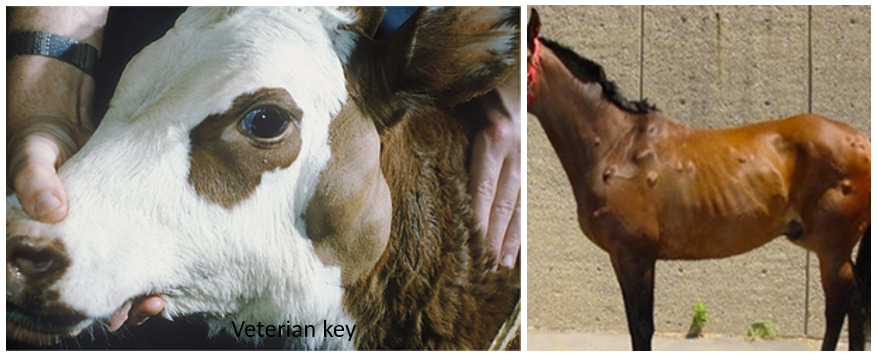Large animal cutaneous neoplasia
Lymphosarcoma
Presentation
Cutaneous lymphosarcoma occurs in both horses and cattle. It tends to affect young animals and is unrelated to bovine leukosis virus (BLV) infection (cattle). Tumors can develop in subcutaneous tissues (particularly in horses), lymph nodes, and in various tissues including the retrobulbar area (cattle), the jaw bone (cattle), the prepuce (horses) as well as internally (eg mediastinal). It is less common in horses than in cattle. Lymphosarcoma does tend to metastasize. Biopsies in horses can be helpful as those with a primarily lymphocytic population tend to spread internally while those with a combination of histiocytes and lymphocytes are related to improved horse longevity.

Diagnosis is often delayed and the disease progresses quickly.
Treatment
Treatment is often ineffective with aggressive forms (lymphocytic). Some early cases will respond to glucocorticoid treatment and/or surgical removal. Systemic chemotherapeutic agents are generally not used in horses due to the associated costs. Microwave ablation holds some promise if the tumor has not yet metastasized. Treatment options are even more limited in cattle due to the restrictions for meat and milk (anticancer agents in the food supply is frowned upon).
Key Takeaways
Lymphosarcoma is a young animal tumor
- Treatment is not attempted in cattle
- Horses with combination cell type lymphosarcoma tend to respond to treatment while those with only lymphocytes do not.
- Metastasis is common by the time of diagnosis.
Resources
Equine lymphoma tutorial EVE 23(4): 205-213, 2011

